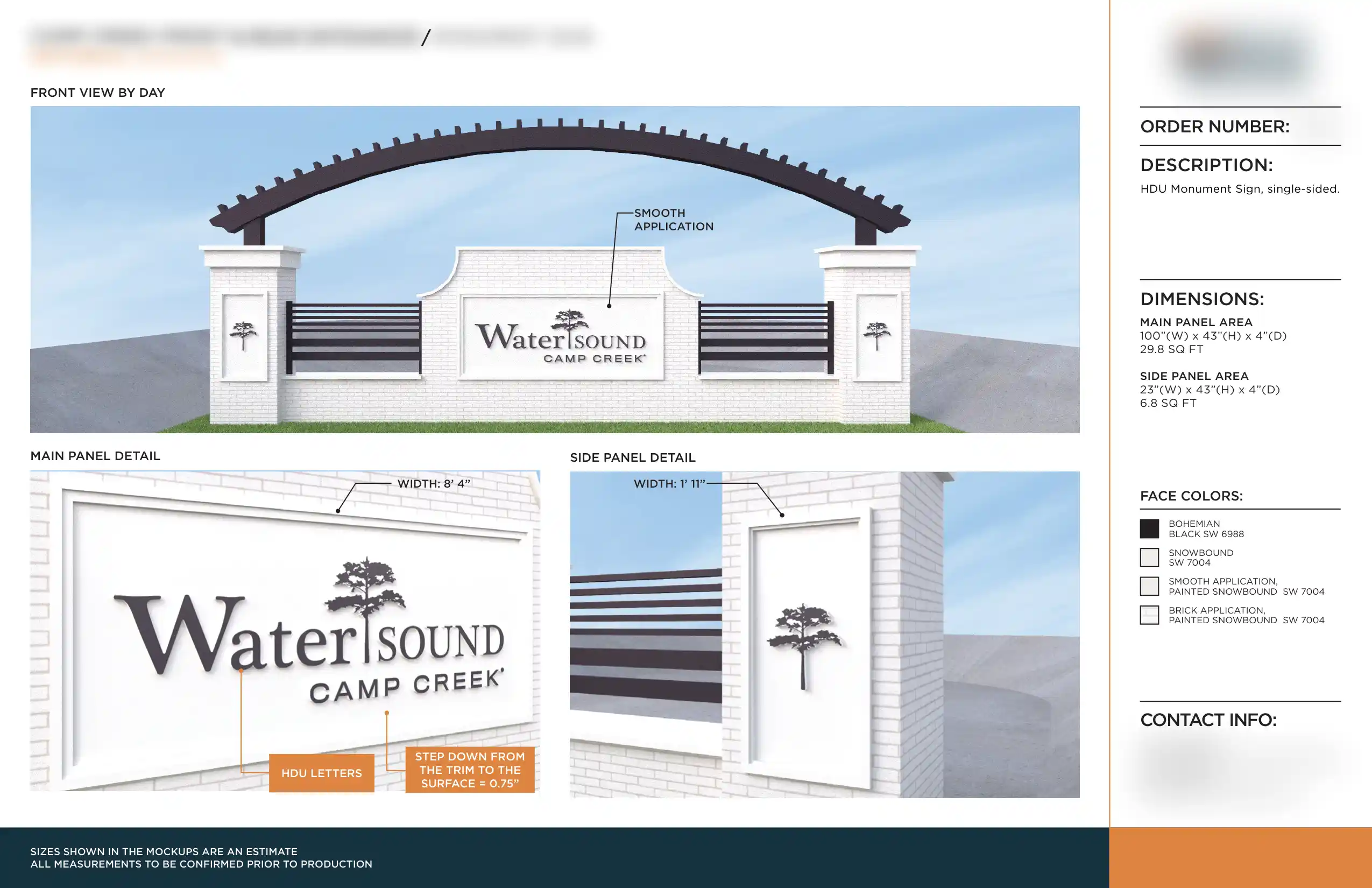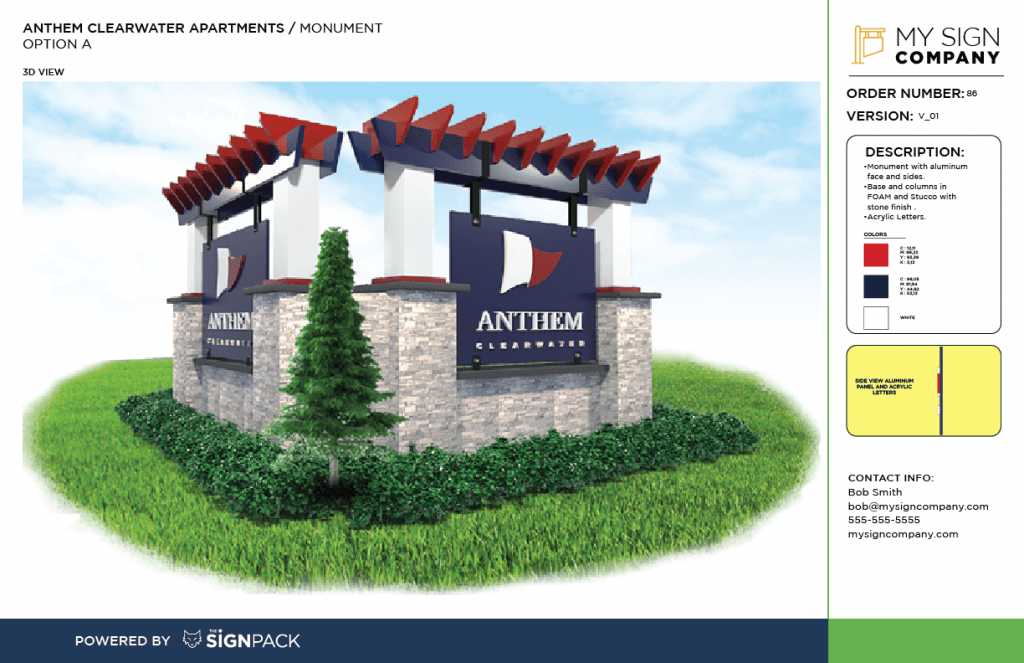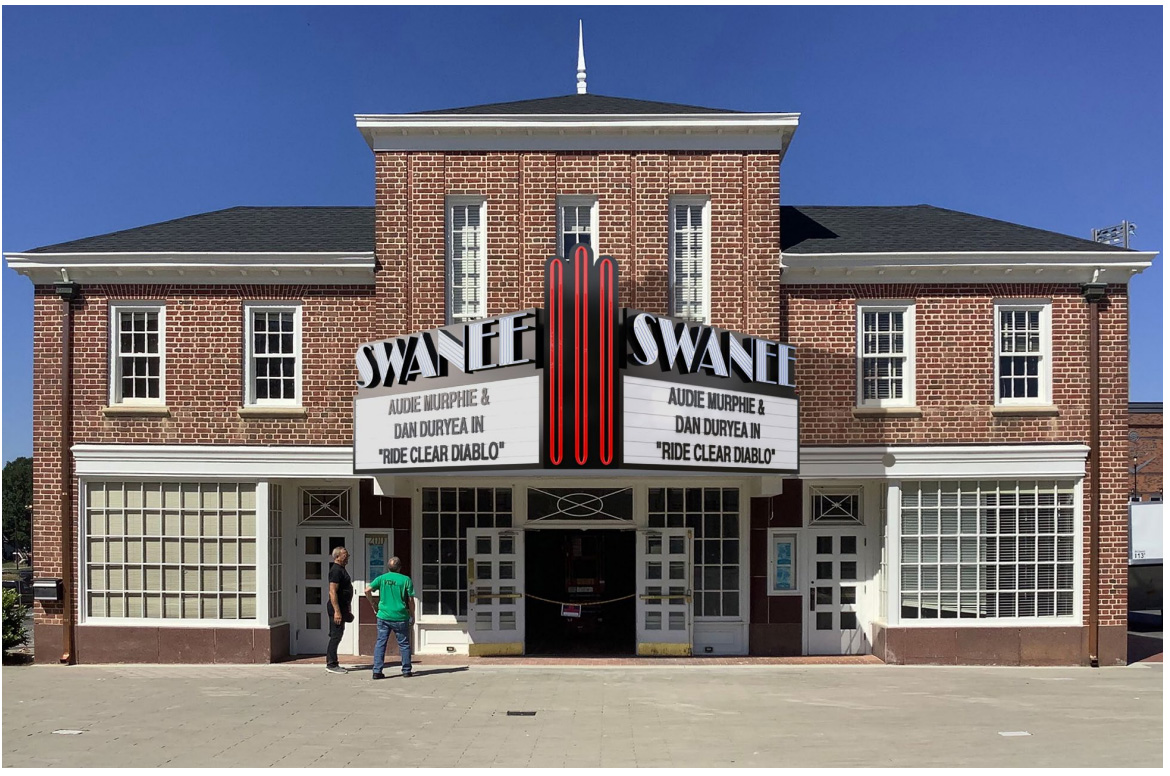In the competitive landscape of advertising, effective signage design is paramount for capturing attention and conveying messages with impact. As experts in sign design, we understand the importance of adhering to key principles that ensure the success of the signage industry. In this blog post, we’ll explore five design principles for creating effective signage and outline five common pitfalls to avoid at all costs.
Clarity and Simplicity
Clear and simple signage ensures that messages are easily understood by viewers. Overly complicated designs or cluttered layouts can overwhelm viewers and detract from the intended message. By keeping signage clear and concise, you maximize readability and ensure that your message resonates with your audience.
For example, imagine a billboard advertisement for a local restaurant. A cluttered design with too much text and graphics might overwhelm drivers passing by, making it difficult for them to discern the restaurant’s name or special offers. However, a clear and simple design featuring bold text, a mouth-watering image of the restaurant’s signature dish, and minimal additional information would immediately capture attention and convey the restaurant’s message effectively.
Visual Hierarchy
Visual hierarchy guides the viewer’s eye through the signage, emphasizing key messages and ensuring important information is readily apparent. Without a clear visual hierarchy, viewers may struggle to identify the most important elements of the signage. By establishing a hierarchy of text and graphics, you help viewers navigate the signage and absorb the message more effectively.
Consider a wayfinding sign in a large shopping mall. A well-designed sign will feature the most critical information, such as directional arrows and important destinations, in larger fonts or bold colors to ensure they stand out. This helps visitors navigate the mall efficiently, even from a distance.
Brand Consistency
Consistency in branding helps reinforce brand recognition and build trust with customers. Inconsistencies in branding, such as using different colors or fonts, can undermine the integrity of the brand and confuse viewers. By maintaining consistent branding across all signage elements, you ensure a cohesive and memorable brand experience for customers.
Think of a chain restaurant with signage across multiple locations. Consistent use of the company’s logo, colors, and fonts on exterior signs, menu boards, and promotional materials creates a unified brand experience for customers. This consistency builds brand recognition and fosters trust among patrons.
Legibility
Legible signage is essential for ensuring that messages are easily read and understood, regardless of viewing distance or environmental conditions. Poor legibility, such as using overly decorative fonts or insufficient contrast between text and background, can make signage difficult to read and frustrate viewers. By prioritizing legibility, you ensure that your message reaches its intended audience effectively.
Take, for instance, a directional sign on a busy street corner.
The text on the sign is crucial for guiding pedestrians and drivers to their destination. If the font is overly decorative or lacks contrast against the background, it may be difficult to read, especially from a distance or in poor lighting conditions. By choosing a clear, legible font and ensuring sufficient contrast between the text and the background, the sign becomes easily readable, enhancing its effectiveness in providing directions to passersby.
Strategic Placement
Strategic placement of signage maximizes visibility and ensures that messages are seen by the target audience. Placing signage in high-traffic areas or locations where the target audience is likely to be present increases the likelihood of engagement. Conversely, placing signage in obscure or poorly visible locations diminishes its effectiveness and wastes resources.
Consider a retail store window display. Placing signage with enticing offers or new arrivals at eye level captures the attention of pedestrians walking by. By strategically positioning the signage where it is most visible from the sidewalk, the store maximizes its chances of attracting potential customers and driving foot traffic into the store.
Common Pitfalls to Avoid
Even with a solid understanding of design principles, certain mistakes can still undermine a sign’s effectiveness. Recognizing these pitfalls early helps sign companies maintain clarity, consistency, and visual impact throughout their projects. Below are some of the most common issues to avoid when designing impactful signage that communicates effectively and strengthens brand presence.
Text Overload
Crowding signage with excessive text overwhelms viewers and makes it difficult to absorb the message. Keep text concise and focus on conveying key information succinctly.
Poor Contrast
Insufficient contrast between text and background reduces legibility and makes signage difficult to read, especially from a distance. Ensure adequate contrast to improve readability and maximize impact.
Inconsistent Branding
Inconsistencies in branding undermine brand recognition and diminish the effectiveness of signage. Stick to brand guidelines to maintain a cohesive brand identity across all signage elements.
Ignoring Viewing Angles
Failing to consider viewing angles results in signage that is poorly visible or obscured from certain vantage points. Consider the viewer’s perspective to ensure signage remains visible and impactful.
Cluttered Design
Cluttered designs overwhelm viewers and detract from the intended message. Keep signage layouts clean and uncluttered to maximize readability and visual appeal.
By adhering to these design principles and avoiding common pitfalls, sign companies can create signage that captivates audiences and delivers messages with impact.
Contact Us at The Sign Pack to learn more about our sign design solutions and how we can help you achieve your sign company goals.







